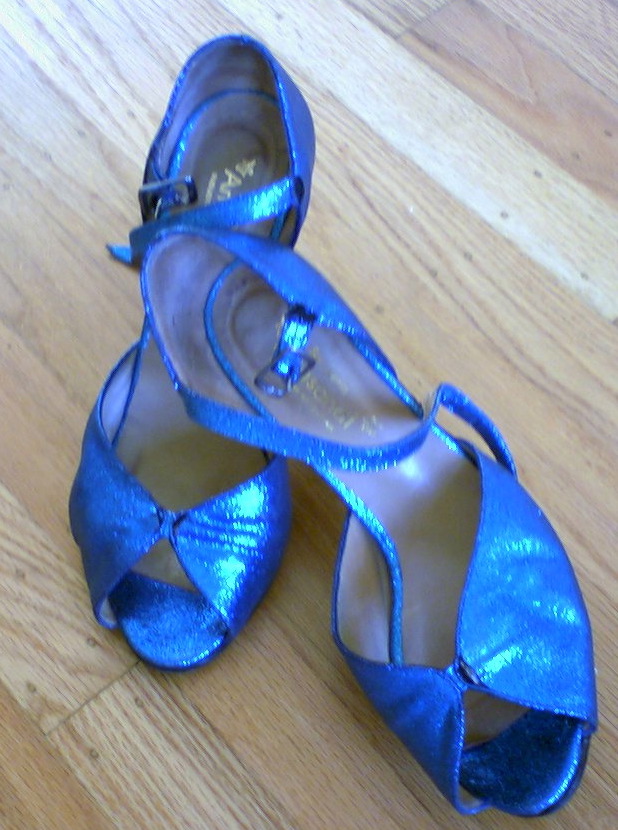As my days here in Buenos Aires are numbered, I notice everything the way I did when I first arrived nearly four years ago. The flower vendors that hunker down on crowded sidewalks, are once again a novelty. The way they festoon their booths with fragrant bouquets, the way they burn incense to lure you by way of your nose . . . the way one in particular, poses his mate gourd mid-air stares off into the distance, perhaps mulling over today’s news: A father and son found each other after 33 years.  A classic bittersweet story. But maybe the vendor, like me, can only think of the sordid details and wonder . . .
A classic bittersweet story. But maybe the vendor, like me, can only think of the sordid details and wonder . . .
I will not become a numb, jaded expat.
This evening, Azucena, the lovely portera in my building here on Arenales, invited me to see a tango show, BsAs Pasion de Tango at Centro Cultural Borges in Galeria Pacifico. The production is the skillful, impeccable work of Jorge Sergiani (a friend of Azucena’s). Since I see so much tango in milongas, I seldom go to shows, but this was a gift. With the vibrant, energetic companionship of Azucena, I’d go most anywhere
And was I ever glad. The show was amazingly good—better than Forever Tango, which I last saw about two years ago in San Fran. The staging, choreography, costumes, lighting, and dancing were all superb, a very tight fit with the music. There was one jaw-dropping number to Pugliese which I’d watch over and over—so I bought the video afterward in the lobby. There was another number, in which the dancers sort of mocked themselves, a jokey rendition of the Nuevo tango steps that fundamentalist tangueros disdain so much. And in so doing they mocked the overly serious tangueros, too. There was a singer whose voice was rich, strong, forceful, and filled the little theater.
The music was live—piano, violin, bass, and bandoneon were excellent. I highly recommend this show, even to tango dancers who often turn up their noses to stage tango, why I don’t know. It’s beautiful to watch and you can absorb so much about body mechanics. I love the aerials, especially when they coincide with the music, as they did tonight on this small stage. I didn’t much care for the show Tanguera. It did not fill the room and was full of small, miniscule moves. But this show was big and expansive, filling the room. The crowd roared.
I couldn’t help but notice the musicians, who, like some of those I would study back in San Francisco after an evening at the symphony, look like ordinary people, even frumpy some of them, who go home to musty apartments, filled with old newspapers, empty cups of coffee, stale smoke. I mean, in comparison to the jazzy, flamboyant dancers, how could they not look frumpy? The bandoneonista was probably in his 60s and I loved watching him sit and work that squeeze box. My mind drifted back to when he was in his twenties, here in Buenos Aires, loving his “axe.” But then the government went bad, the lights went out in his favorite clubs, tango went dark. The last dictatorship, which began its sordid life in 1976, quashed Argentine culture.
On January 17, 1977, some of its henchman nabbed a 28-year-old surgeon who treated the poor in a suburb just outside of Buenos Aires. Her husband, Abel Pedro Madariaga, watched in horror as army officers in civilian garb pushed her into a Ford Falcon and drove off. She was pregnant.
All we know today is that they had her deliver her baby, then murdered her, how we may never know. Let’s only hope against hope, with a bit a mercy, if that is possible. The baby was given to a military family.
That baby today is a 33-year-old man, Francisco Madariaga Quintela. He found out through DNA testing, following years of suspicion who he was (his “adoptive” father was a violent man he never felt part of). He was united with his biological father Abel Pedro Madariaga and they gave a press conference in Buenos Aires, Tuesday, Feb. 23, 2010, smiling big. Abel said he had gone on living only for this moment.
The Madres, grandmothers and mothers who have survived that reign of terror called a Dirty War (Guerra Sucia), have helped some 100 of these kidnapped babies of murdered mothers to reunite with any biological family that is left. Francisco is the 101st one.
So it’s not a stretch to say that the bandoneon moans and cries and has other human-voice qualities. It has seen, heard things, been stashed in an attic, retrieved. Thank heavens, tango survived its darkest period.
Azucena probably didn’t notice the flower vendor, as I did. Yerba mate, flower kiosks that keep hours through the night, are for her as much a fact of life as tango, as the “disappeared” children.
But as I watched him cradle his mate gourd’s sorbete (straw) an inch from his lips, staring off, he became a freeze frame. An image, forever indelible, that is my Argentina, along with Franciso and Abel’s smiling embrace, along with suffering I am incapable of imagining.